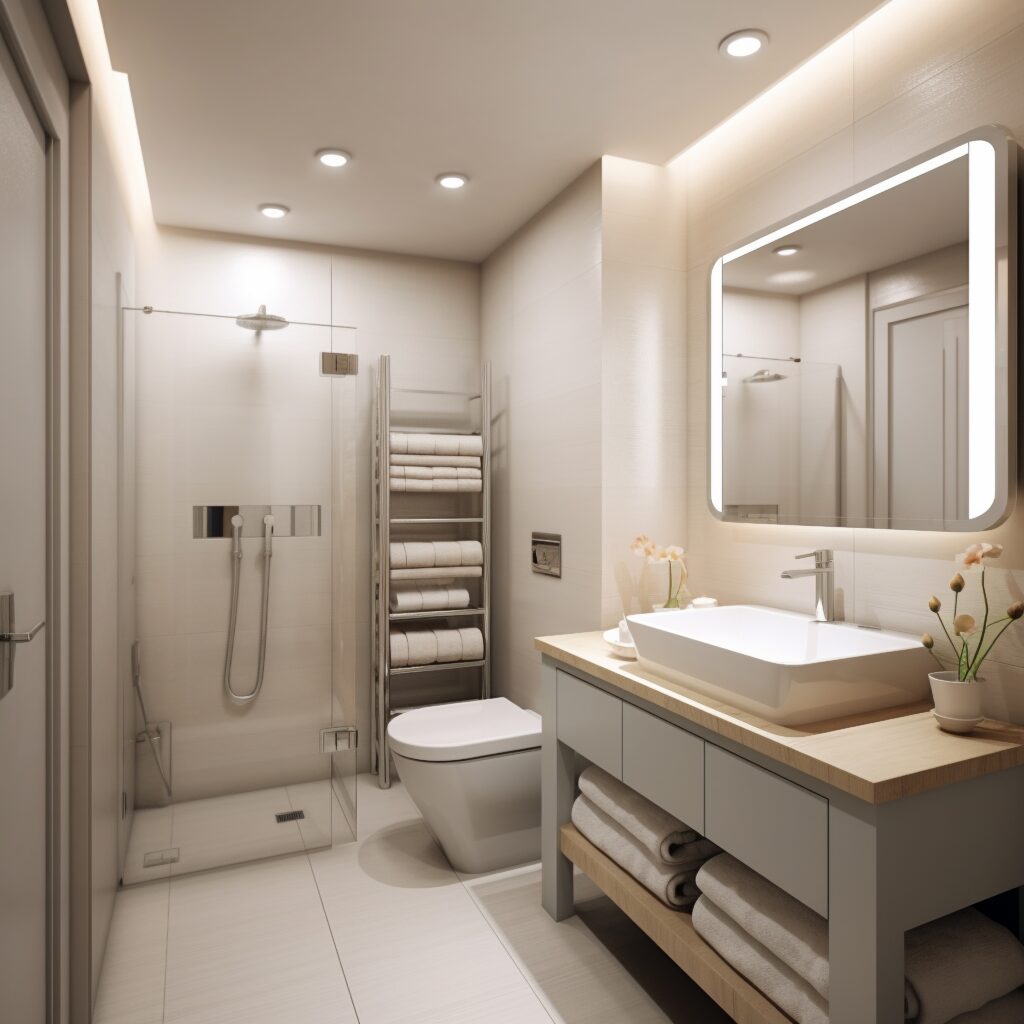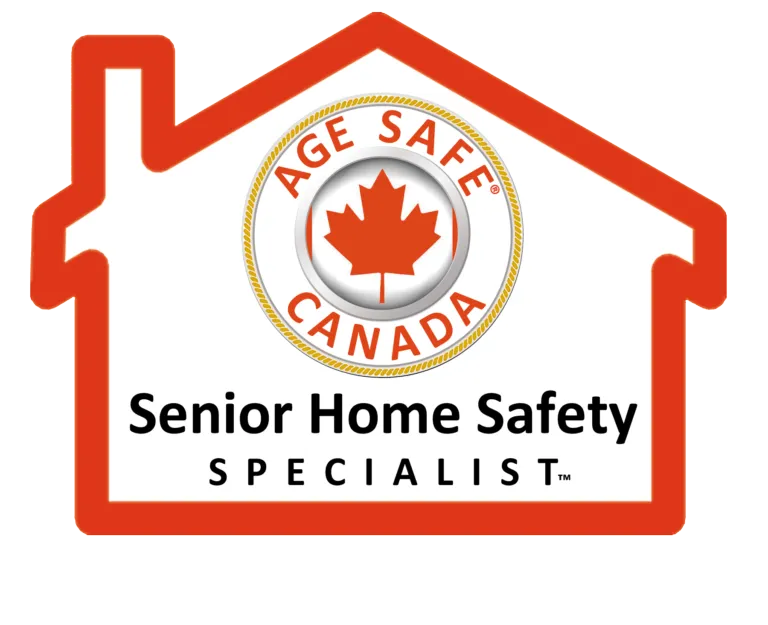Homeowners across Ottawa are becoming more intentional about creating living spaces that evolve with their changing needs. Whether planning for aging in place or accommodating elderly family members, bathroom remodeling has emerged as one of the most strategic investments a homeowner can make. With the rising demand for accessibility upgrades, a well-designed, senior-friendly bathroom not only supports safety and comfort but also increases a property’s market appeal. If you’re considering a small bathroom remodel for elderly in Ottawa, you’re already on the right path toward adding long-term value to your home.

Why Bathroom Accessibility Matters?
Bathrooms are often the most dangerous spaces in a home for aging adults. Slippery surfaces, limited maneuvering space, and awkward fixtures can turn daily routines into hazards. According to health and housing experts, most falls occur in the bathroom. Remodeling with age-friendly design principles isn’t just about style or convenience—it’s about safeguarding independence and preserving dignity.
Key Design Elements for a Senior-Friendly Bathroom
1. Zero-Threshold Showers
A curbless or walk-in shower removes the barrier of a traditional step-up design, making entry and exit easier for those with limited mobility. These showers provide a seamless transition from bathroom floor to shower, accommodating wheelchairs, walkers, or anyone at risk of tripping.
Opting for an open, zero-threshold design also allows for elegant tile work and modern appeal—an aesthetic and functional improvement that appeals to prospective buyers as much as current residents.
2. Non-Slip Flooring
Choosing the right flooring is essential. Surfaces like textured porcelain tile, rubber flooring, or vinyl with anti-slip finishes provide grip underfoot and help prevent falls. For added safety, heated floors can reduce moisture accumulation, particularly in colder climates like Ottawa’s.
3. Grab Bars That Blend with Design
Gone are the days of institutional-looking grab bars. Designers now incorporate stylish, durable grab rails that double as towel racks or shelves. These supports should be installed near toilets, inside showers, and around bathtubs—wherever extra balance is needed.
Choosing finishes that match faucets and hardware creates a unified aesthetic that feels intentional rather than clinical.
4. Adjustable Showerheads and Handheld Sprayers
Fixed showerheads don’t accommodate users of different heights or those seated on a shower bench. Handheld sprayers mounted on sliding bars allow for flexibility and control. This small upgrade supports both seated and standing users while enhancing the bathing experience.
Layout Considerations for Limited Spaces
Senior-friendly doesn’t mean bulky or cramped. Even compact bathrooms can be transformed into functional, accessible retreats with smart planning. Here’s how:
Open Floor Plan
Maximizing open space enhances mobility. Replacing a traditional tub with a walk-in shower and removing bulky vanities can open up the layout. A floating vanity or pedestal sink frees floor space, allowing easier wheelchair access.
Pocket Doors and Wider Entryways
Standard doorways can be restrictive for mobility aids. Replacing swing doors with pocket or sliding options improves accessibility without requiring more square footage. Where possible, widen entryways to at least 32 inches to meet accessibility standards.
Recessed Shelving and Built-Ins
Open shelves or recessed wall niches create storage without obstructing pathways. Keeping essential items within easy reach reduces the risk of overextending or stooping.
Enhancing Safety Through Thoughtful Features
Motion-Activated Lighting
Well-lit bathrooms are safer, especially during nighttime visits. Installing motion-activated LED lighting ensures the space is illuminated as soon as someone enters. Layered lighting—task, ambient, and accent—eliminates shadows and improves visibility for grooming tasks.
Temperature-Controlled Fixtures
Anti-scald valves and thermostatic mixers prevent water temperature from reaching dangerous levels. These fixtures are essential in preventing burns for seniors with decreased sensitivity or slower reaction times.
Raised Toilet Seats
Replacing standard toilets with comfort-height models reduces the distance seniors must bend. This small change significantly enhances ease of use and minimizes the strain on joints.
Tech Features to Future-Proof Your Bathroom
Smart Toilets
Features like built-in bidets, self-cleaning systems, and automatic lids promote hygiene and reduce physical strain. While the initial cost may be higher, these upgrades offer long-term convenience and luxury.
Voice-Controlled Lighting and Music
Voice assistants can integrate with bathroom lighting, sound systems, and temperature settings, allowing seniors to personalize their environment without physical effort.
Material Choices that Support Long-Term Durability
Senior-friendly bathrooms should prioritize durability alongside comfort. Materials must withstand moisture, daily use, and wear over time. Here are some preferred options:
- Solid Surface Countertops: Non-porous and easy to clean, they resist bacteria and stains.
- Wall Panels over Tile: Acrylic or PVC wall panels require less maintenance and are easier to install than traditional tile.
- Tempered Glass Shower Enclosures: These offer strength and safety, breaking into dull fragments instead of sharp shards in case of accidents.
Universal Design: A Trend That Increases Home Value
Universal design is about creating spaces usable by people of all ages and abilities without the need for adaptation. A bathroom designed with universal principles looks sleek, modern, and practical, not medical. These features resonate with a wide range of buyers.
Realtors increasingly report that accessible features, particularly in bathrooms, are now viewed as luxury amenities rather than niche upgrades. By incorporating these enhancements now, homeowners position themselves ahead of the curve.
Balancing Style and Functionality
Accessibility doesn’t mean sacrificing beauty. Designers can incorporate warm color palettes, contemporary finishes, and minimalistic lines to elevate the space. Frameless mirrors, under-cabinet lighting, and custom cabinetry ensure that the bathroom feels both high-end and highly usable.
Working with bathroom specialists who focus on aging-in-place design ensures that safety features are integrated seamlessly rather than tacked on as afterthoughts.
Cost vs. Value: What to Expect
A senior-friendly bathroom remodel can vary widely in cost depending on the scope of work. A minor upgrade—like adding grab bars, adjusting lighting, and replacing the toilet—may cost a few thousand dollars. A full-scale renovation involving plumbing, structural modifications, and smart technology can range upwards of $25,000–$40,000.
While the upfront investment may seem steep, it’s important to view this through the lens of home equity and long-term value. Accessible bathrooms often allow homeowners to remain independent longer, reduce the need for outside care, and increase resale value. Potential buyers appreciate homes that are ready for multi-generational living or future-proof living solutions.
When to Remodel: Timing Matters
The ideal time to remodel a bathroom for accessibility is before it becomes urgently necessary. Planning allows for thoughtful choices and better budget management. Homeowners who wait until an accident or injury forces a remodel often face compressed timelines and higher costs.
Whether preparing for aging parents or personal use, an early remodel provides peace of mind and flexibility.
Permits and Regulations in Ottawa
Local building codes and regulations may influence certain remodeling decisions. For example, grab bar placements, electrical work, and accessibility standards may require permits or inspections. Working with a contractor familiar with Ottawa’s regulations ensures compliance and avoids delays.
It’s also worth exploring any home modification grants or tax incentives offered for aging-in-place renovations, especially if the remodel is for medical or accessibility needs.
Who Benefits from a Senior-Friendly Bathroom?
While the primary audience may be seniors or people with disabilities, many groups find value in accessible design:
- Caregivers gain better ergonomics and safer spaces to assist loved ones.
- Children benefit from easy-to-reach fixtures and non-slip floors.
- Pregnant women or those recovering from surgery appreciate comfort-height toilets and handheld showers.
A bathroom that serves multiple generations is a smart use of space—and a strong selling point for prospective buyers.
Avoiding Common Mistakes
Even well-meaning homeowners can make errors when remodeling for accessibility. Here are some to avoid:
- Installing grab bars into drywall without reinforcement. These need secure backing to support weight.
- Overlooking lighting. Natural light is great, but artificial light layers are essential for visibility.
- Neglecting door clearance. Standard doors may not accommodate mobility devices—measure twice before selecting new hardware.
- Choosing glossy tiles. They may look beautiful, but they can be dangerously slippery when wet.
Hiring professionals with specific experience in aging-in-place solutions reduces these risks.
Maintenance and Longevity
A senior-friendly bathroom should be easy to maintain. Choosing mold-resistant grout, anti-fog mirrors, and water-efficient fixtures helps reduce long-term upkeep. Regular checks on safety equipment—such as grab bars and GFCI outlets—ensure everything remains secure and functional.
Resale Value and Buyer Perception
As Canada’s population ages, accessibility features are becoming more desirable. Homes with senior-friendly bathrooms are increasingly seen as move-in-ready and future-proof. Buyers with aging parents, disabilities, or young children all recognize the appeal.
Even if a buyer doesn’t need accessible features immediately, knowing the home can adapt over time often tips the scales in favor of purchase.
Building for Life’s Transitions
Life changes quickly—whether through aging, illness, or unexpected injury. Creating a bathroom that evolves with the homeowner offers a measure of stability during transitions. More than a selling feature, it’s a lifestyle investment.
When a bathroom supports independence, it becomes more than a room—it becomes a sanctuary.
Why Choose Adaptive Living?
Adaptive Living is dedicated to transforming homes into spaces that are safe, functional, and beautiful for every stage of life. Our approach is rooted in precision, innovation, and empathy—ensuring that every senior-friendly bathroom we remodel is tailored to the individual needs of our clients.
We collaborate closely with homeowners, caregivers, and healthcare professionals to design solutions that are not only practical but also inspiring. From concept to completion, our team handles every detail with care, ensuring the finished space is seamless in both form and function.
Whether you’re planning or responding to a new need, Adaptive Living offers trusted expertise in accessibility remodeling. With a clear focus on quality craftsmanship and thoughtful design, we’re here to help you add real, lasting value to your home.



